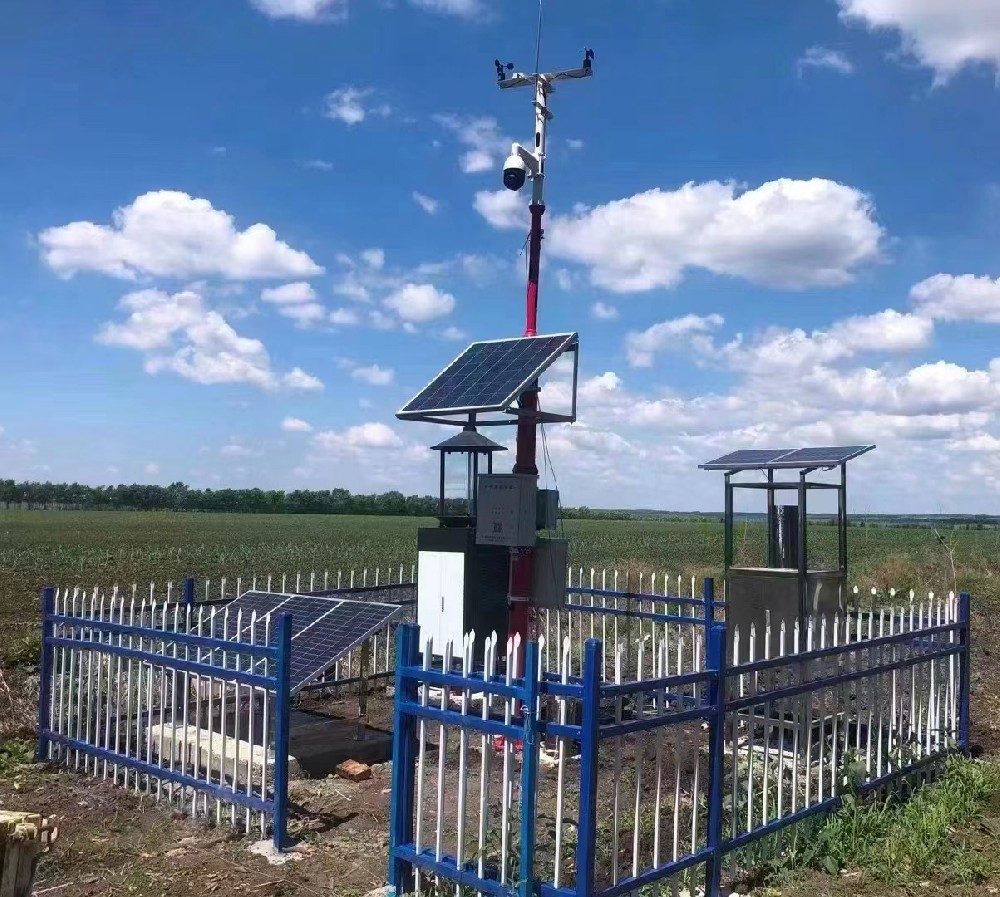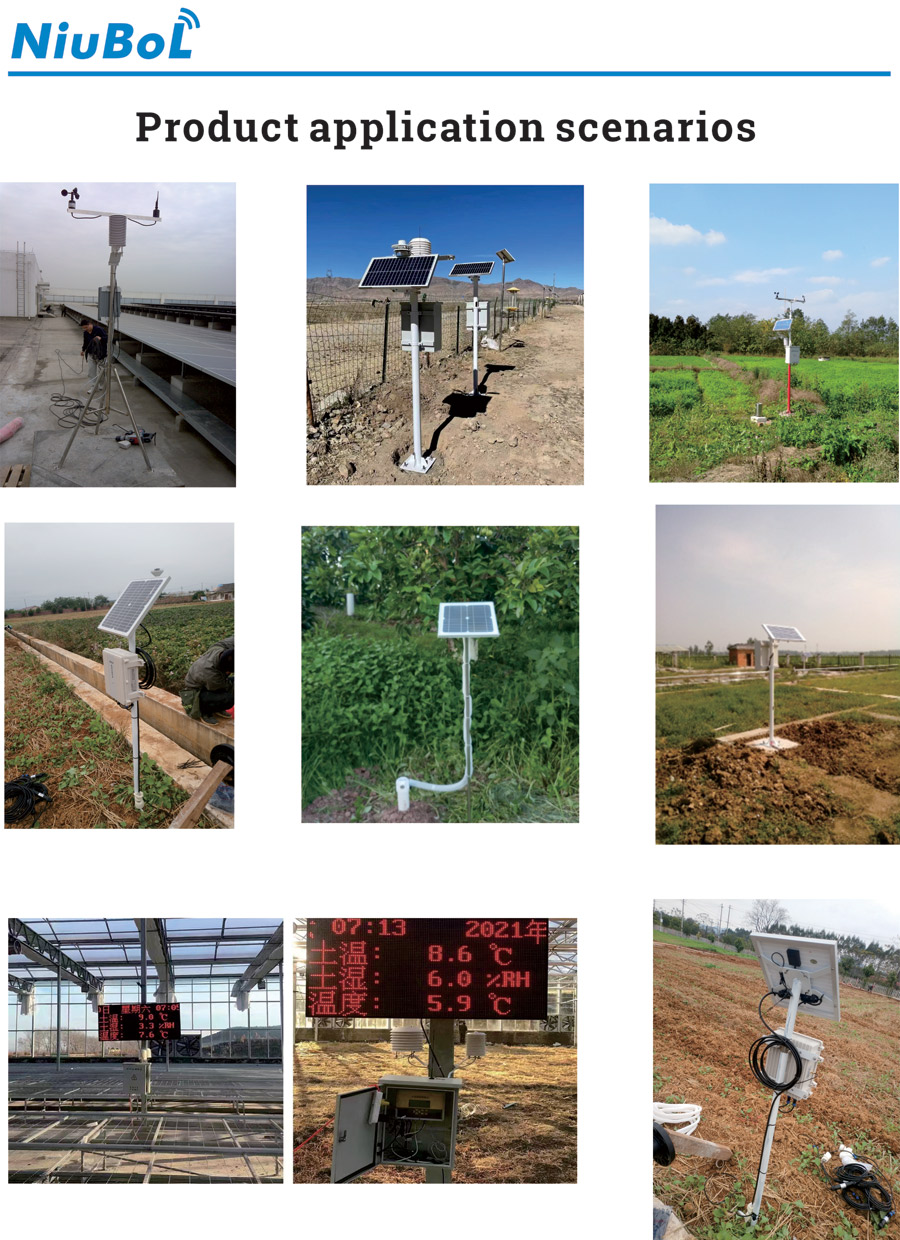

— Blogs —
—Products—
 Consumer hotline +8618073152920
Consumer hotline +8618073152920 WhatsApp:+8615367865107
Address:Room 102, District D, Houhu Industrial Park, Yuelu District, Changsha City, Hunan Province, China
Product knowledge
Time:2024-05-18 15:31:22 Popularity:1434
An automated agrometeorological station is a weather monitoring system designed specifically for agricultural production that automatically collects and records weather data near farmland. These data are critical to farmers and managers because they help them better understand and predict environmental conditions on their farmland, so they can make more scientific agricultural management decisions.

An automated weather station for agriculture usually consists of the following components:
1. agricultural sensors: used to monitor various meteorological parameters such as temperature, humidity, wind speed, precipitation, sunshine hours, soil moisture, etc.
2. data logger: used to store the data collected by the sensors.
3. communication system: to transmit data from the field to the data centre or to farmers' computers and mobile devices.
4. software platforms: for analysing data and providing weather forecasts and farming advice.
Characteristics of automated weather stations for agriculture include:
- Automation: capable of monitoring meteorological conditions automatically and continuously without human intervention.
- Real-time data: Provides real-time weather data to help farmers respond in a timely manner.
- Accuracy: High-precision sensors ensure data accuracy.
- Customisability: The weather parameters monitored can be tailored to specific crop and regional needs.
- Remote Access: Farmers can access data and analyse results remotely via the internet.
Through the use of automated agricultural weather stations, farmers and managers can more accurately understand changes in the farm environment, predict weather events, optimise irrigation schedules, rationalise farming activities, reduce resource wastage and improve crop yield and quality.
Agricultural automatic weather stations play an important role in the development of modern agriculture, and the main reasons for using agricultural weather stations are as follows:
1. Uncontrollability of weather and meteorological environment: Agricultural production is greatly affected by the weather and meteorological environment, such as temperature, humidity, wind speed, rainfall, etc. will directly affect the growth and yield of crops. Through the automatic agricultural meteorological station, these meteorological parameters can be monitored in real time, providing farmers with accurate meteorological data and helping them to better arrange agricultural production activities.
2. Improve the precision of agricultural production: automatic agricultural weather stations can not only monitor meteorological data, but also combine with other agricultural information, such as soil moisture, crop growth conditions, etc., to carry out precise farmland management. Farmers can optimise farm operations such as irrigation, fertiliser and pesticide use based on these data to improve crop growth efficiency and yield.
3. Early warning and disaster prevention: automatic agricultural weather stations can help farmers take appropriate measures to protect crops and avoid disaster losses through timely warnings. For example, when an impending storm or drought is predicted, farmers can take measures in advance to take precautions and reduce losses.
4. Promote the development of smart agriculture: agricultural automatic weather stations are an important part of smart agriculture, and through integration with other agricultural equipment and systems, such as intelligent irrigation systems and automated spraying robots, automation and intelligence in agriculture can be achieved. This not only improves the efficiency of agricultural production, but also reduces the work intensity of farmers.
5. Improve the efficiency of agricultural production: through real-time monitoring and early warning, farmers can take timely measures to reduce disaster losses. Meanwhile, precise farmland management can optimise the use of resources, reduce waste, and improve the growth efficiency and yield of crops, thus increasing the benefits of agricultural production.
The following factors need to be considered when choosing a suitable automatic agrometeorological station:
1. Monitoring parameters: According to crop needs and regional climatic conditions, determine the meteorological parameters to be monitored. Common parameters include temperature, humidity, wind speed, precipitation, sunshine hours, soil moisture and so on.
2. Equipment accuracy: Ensure that the sensors of the selected equipment have high accuracy and can provide accurate data.
3. Data recording and storage: Consider the capacity and storage capability of the data logger to ensure that a sufficient amount of historical data can be saved for analysis.
4. Communication method: Select the appropriate communication method, such as wireless network, cellular network, satellite communication, etc., to ensure real-time data transmission and remote access.
5. Durability and protection: Consider the durability and protection of the equipment to ensure that it can operate normally under various weather conditions, such as lightning protection, waterproof and dustproof.
6. Software platform: Choose a software platform that provides powerful data analysis functions and is capable of providing weather forecasts, agricultural advice and decision-making support.
7. Maintenance and operation: Consider the difficulty of maintenance and complexity of operation of the equipment, and choose equipment that is easy to maintain and operate.
8. Cost: Weigh the cost and expected benefits of the equipment based on budget and return on investment considerations.
9. Brand and supplier: Choose a well-known brand and a reliable supplier to ensure the quality of the equipment and after-sales service.
10. Scalability: Consider possible changes in demand in the future and choose equipment with scalability so that features can be easily added or upgraded.

To sum up, agricultural weather stations have an irreplaceable role in the development of modern agriculture. Through the use of automatic agricultural weather stations, farmers can better understand the meteorological environment, improve the accuracy and efficiency of agricultural production, promote the development of smart agriculture and improve the efficiency of agricultural production.
Prev:PM2.5 Sensor for Dust Monitoring in Chemical Plants
Next:How automated weather stations are reshaping agriculture
Related recommendations
Sensors & Weather Stations Catalog
Agriculture Sensors and Weather Stations Catalog-NiuBoL.pdf
Weather Stations Catalog-NiuBoL.pdf
Related products
 Combined air temperature and relative humidity sensor
Combined air temperature and relative humidity sensor Soil Moisture Temperature sensor for irrigation
Soil Moisture Temperature sensor for irrigation Soil pH sensor RS485 soil Testing instrument soil ph meter for agriculture
Soil pH sensor RS485 soil Testing instrument soil ph meter for agriculture Wind Speed sensor Output Modbus/RS485/Analog/0-5V/4-20mA
Wind Speed sensor Output Modbus/RS485/Analog/0-5V/4-20mA Tipping bucket rain gauge for weather monitoring auto rainfall sensor RS485/Outdoor/stainless steel
Tipping bucket rain gauge for weather monitoring auto rainfall sensor RS485/Outdoor/stainless steel Pyranometer Solar Radiation Sensor 4-20mA/RS485
Pyranometer Solar Radiation Sensor 4-20mA/RS485
Screenshot, WhatsApp to identify the QR code
WhatsApp number:+8615367865107
(Click on WhatsApp to copy and add friends)
